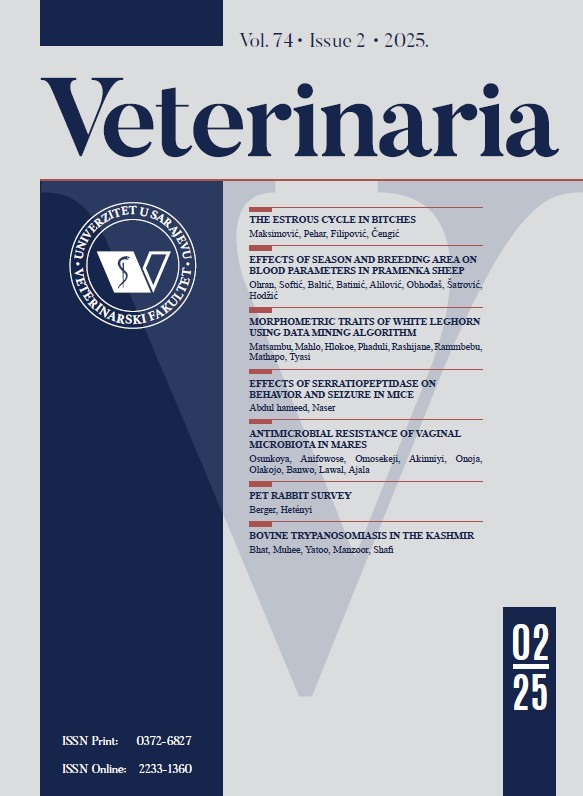Sexual dimorphism of rabbit bucks and does experimentally infected with Trypanosoma brucei brucei
Keywords:
Trypanosomosis, rabbit, packed cell volume, epistaxis, orchitis, mean survival periodAbstract
This study was designed to compare Trypanosoma brucei brucei infection in rabbit bucks and does. Twenty-four locally-bred rabbits were divided into three groups comprising eight rabbits each. Group A and B had bucks and does, respectively and were intraperitoneally inoculated with 0.1 mL of blood containing approximately x106 cells of T. b. brucei. Group C was made up of four bucks and does each and served as the uninfected control. Clinical signs, prepatent period, rectal temperature, packed cell volume, blood glucose, body weight and mean survival period were monitored. The rabbits in the infected groups (A and B) showed signs of rough hair coat, alopecia, coughing, corneal opacity and unilateral as well as bilateral ocular discharge. Those in group A also had epistaxis, scrotal dermatitis and orchitis. The parasitaemia of group A was significantly (p < 0.05) lower than in group B at week 1 post infection. Subsequently, there was no significant (p > 0.05) difference between the two groups. The rectal temperature and mean survival period of group A were lower than those group B, although these were not significant (p > 0.05). Packed cell volume, body weight and blood glucose of group A were not significantly (p > 0.05) different from those in group B throughout the study. The study showed slight difference in the susceptibility of rabbit bucks and does to T. b. brucei infection, suggesting early reproductive involvement in the male than the female.








